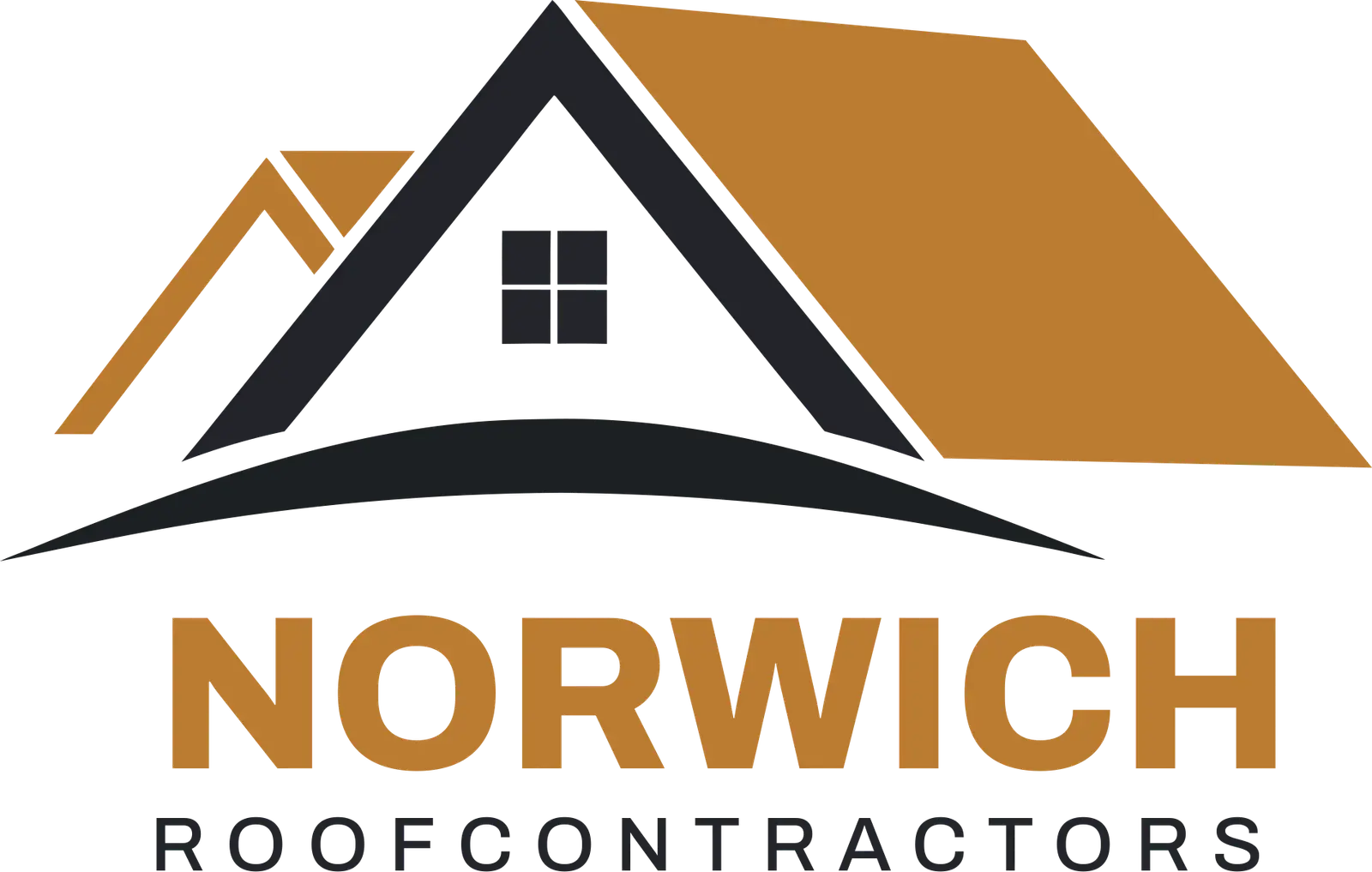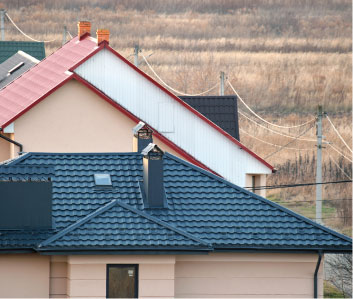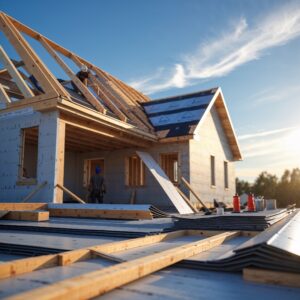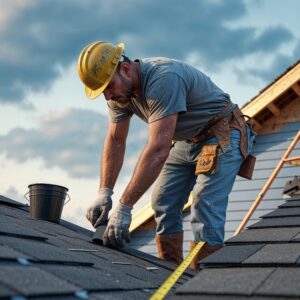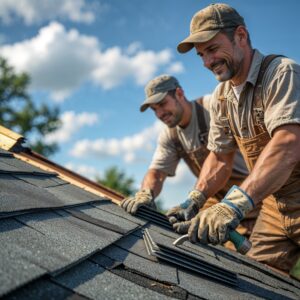Industrial Roofing incorporates various systems designed to protect commercial buildings from environmental elements and ensure the structure’s durability. It offers various options that cater to the different needs of factories, warehouses, and large commercial structures, each providing unique benefits.
Industrial roofing includes flexible and easily installed single-ply membranes, multi-layered durable BUR, and long-lasting metal tiling. Other options, like Modified Bitumen and Spray Foam, address specific industrial requirements. Understanding all these types helps businesses choose the most effective roofing solution.
Top 5 Durable Industrial Roofing Types for Every Facility
Selecting the right roofing system is essential for any commercial construction to enhance the building’s functionality and efficiency. With the best industrial options available, you can make an informed decision that suits your preferences. They are ranked according to their durability, performance, and cost-effectiveness.
Built-Up Roofing | Excellent Water Proofing and Traditional Option
Ideal for– Flat or low slope roofs of warehouses and manufacturing facilities.
Built-up roofing is a time-tested system widely used in industrial buildings or factories for centuries. It consists of multiple layers of bitumen (asphalt or coal tar) and reinforcing fabrics to create a durable and waterproof membrane. BUR systems are typically constructed with three to five alternating layers, topped with aggregate-like gravel for added protection.
Benefits
- BUR is renowned for longevity, which often lasts 20 to 30 years or more with proper maintenance. Its multi-layered approach provides a robust barrier against weathering and physical damage to make it highly resilient to cracking and leaks.
- The design of built-up roofing creates a continuous, watertight seal that effectively prevents water intrusion into the structure.
- Materials, particularly those using coal tar, offer excellent fire-resistant properties, offering the owners the best industrial roofing type for buildings requiring strict fire codes.
- The layering of BUR offers good thermal insulation to regulate indoor temperatures.
- While the initial installation may be higher than some alternatives, the long-term savings from reduced repairs and maintenance make BUR a cost-effective option.
- Built-up roofs require low upkeep compared to other types.
Drawbacks
- Multiple-layer roofing adds significant weight and requires additional structural support that may not be possible in older buildings.
- Installing BUE can be complex, time-consuming and labour-intensive, increasing the costs.
- During application, hot bitumen can produce strong odours and hazardous fumes.
- While generally low-maintenance, regular inspection is required to identify water pooling and cracks.
Single-Ply Membrane | Lighter and Easily Install Roofs
Ideal for– Logistics centres, retail facilities, low-slope roofs, and multiple commercial settings.
Single-ply membrane roofing consists of flexible sheets made from synthetic polymers. It comes in rolls that are easy to transport and install, making it an ideal roofing type for modern industries. Single-ply membranes seal at joints to create a continuous waterproofing layer and can be fully adhered to the roof deck.
Single-ply roofing systems include materials such as
- Thermoplastic Olefin (TPO)-— Energy efficient and heat-weldable seams.
- Polyvinyl Chloride (PVC)-— Excellent fire resistance and durability but may cost more.
- Ethylene Propylene Diene Monomer (EPDM)— Flexible rubber membrane and resilient to weathering.
Benefits
- Designed to withstand extreme weather conditions, including high winds, UV radiation and hail.
- Resistant to tears and punctures to ensure 20 to 40 years of long-lasting protection of the building.
- The lightweight nature reduces the structural load on buildings.
- Installation is quicker and easier compared to traditional roofing systems, lowering labour costs.
- Reflective colour options that help reduce heat absorption and improve energy efficiency.
- Possess fire-retardant properties to minimise the risk of spreading fire across the roof.
- Highly eco-friendly type of industrial roofing that can often be recycled at the end.
- Once installed, single-ply roofs require minimal maintenance with periodic inspections.
Drawbacks
- Susceptible to punctures from sharp objects or heavy foot traffic.
- Seams can degrade due to prolonged exposure to UV rays.
- Moisture may be trapped beneath the membrane, causing blistering.
- Although easily installed, poor workmanship can lead to long-term problems.
Metal Roofing | Versatile Solution for Industrial Structures
Ideal for– Industrial factories, distribution centres, residential and agricultural buildings
Metal roofing is available in various materials and styles. It includes galvanised (coated with zinc for corrosion resistance), aluminium, copper, and zinc, each with unique features. Metal tiling features vertical panels with concealed fasteners to provide a sleek appearance. It is made in a wavy pattern to add strength to the structure. Metal roofs usually are coated with protective finishes to increase the structure’s resistance to fading.
Interesting Fact!
Metal roofing accounted for approximately 40% of the total market value in 2024, with a notable preference for commercial buildings. It is projected to reach £1.3 billion by 2028, growing at a CAGR of 2.06%.
Benefits
- Metal roof is an exceptionally durable industrial roofing type, with a lifespan of 40 to 70 years or more in comparison to asphalt shingles.
- The material reflects solar heat, which can reduce cooling costs by up to 25%. This energy efficiency is particularly beneficial for large industrial buildings.
- Metal roofing requires comparatively lower maintenance than other roofing materials. Their robust design reduces the risk of leaks and damage.
- It is non-combustible and typically receives a class A fire rating. This provides an added layer of safety to commercial buildings.
- Metals like copper and zinc are invulnerable to pests and rot decay. This ensures the roof integrity remains uncompromised longer.
- Building owners have multiple styling and colouring varieties in metal that could benefit the visual appeal of the building.
Drawbacks
- High upfront cost than traditional options due to the need for specialised skills and tools.
- Susceptible to dents from large hailstones or falling branches.
- Metals expand and contract with temperature changes, which can stress fasteners and seams.
- Although metal roofs are coated to resist corrosion, rust can develop if they are compromised.
Modified Bitumen Roofing | Resistant to Variable Environmental Elements
Ideal for— Flat or low-slope commercial buildings, warehouses, factories, and rooftop gardens.
Modified bitumen is an asphalt-based roofing material that incorporates rubber or plastic polymers. It has gained popularity since its introduction in the 1960s. The foundation layer of Mod bit is self-adhered or mechanically fastened to the roof substrate. The roofer reinforced the materials with fibreglass or polyester for added structural strength.
Benefits
- Withstands the rigours of industrial environments and provides exceptional tear resistance.
- Inherently waterproof with fewer seams than other roofing systems, significantly reducing the risk of leaks.
- Polymer modifications allow bitumen to expand and contract with temperature fluctuations without cracking.
- Installation methods are straightforward and have less disruption to ongoing operations. The material is available in rolls, which are easier to handle and less labour-intensive.
- Resistant to UV radiation, extreme temperatures, and weathering, making it the best industrial roofing material for businesses.
- The main advantage of modified bitumen roofing is its compatibility with a wide range of existing roofing materials. This makes it an ideal industrial roof choice for repairs and renovations.
Drawbacks
- Darker colour bitumen roofing absorbs significant heat that increases cooling costs.
- The material is waterproof but can be prone to water pooling if not properly installed.
- Shorter lifespan of 10-20 years than other industrial roofing types.
- The installation process can produce unpleasant odours that may linger some time, necessitating temporary relocation during the work.
Spray Foam Roofing | Adaptable and Energy-Efficient
Ideal for– Irregularly shaped roofs or those requiring additional insulation.
Spray foam roofing is also known as spray polyurethane foam (SPF), which makes it more effective against sun rays. SPF is created by mixing two liquid components-polyol/resin and isocyanate– under high pressure. When sprayed onto the substrate, the mixture expands to 30 times its original volume to form a solid and seamless layer. After the foam has cured, a protective elastomeric coating of silicone, acrylic, or urethane is applied. In some systems, granules may be embedded in the topcoat to provide additional traction.
Benefits
- SPF provides a high R-value that reduces energy consumption by approx. 30%, minimising air leaks and thermal bridging.
- The fluid nature of spray foam allows it to conform to irregular surfaces and fill gaps to create a seamless barrier.
- Closed-cell spray foam acts as a vapour barrier to protect against moisture intrusion and mould growth, which is best for industrial settings where humidity levels can fluctuate.
- Spray foam can be applied rapidly to minimise downtime during installation. Its ability to adhere directly to existing surfaces also eliminates the need for tear-off.
- SPF insulation is resistant to sagging and degradation to ensure long-lasting performance even in harsh industrial environments.
Drawbacks
- The process can lead to overspray, where foam particles unintentionally land on adjacent surfaces.
- Spray foam can shrink, leading to cracks and gaps that may allow water penetration.
- Some foam products can release volatile organic compounds during installation, which may pose health risks.
Conclusion
Choosing the right type of industrial roofing is essential for performance and longevity. Each option offers distinct features and advantages tailored to specific needs and environments. While metal and single-ply roofs are highly durable, modified bitumen and spray foam roofing offer resistance to various industrial hazardous elements.
For expert advice on industrial roofing installation or maintenance, consult a Norwich Roofing professional to ensure your facility remains secure and efficient.
